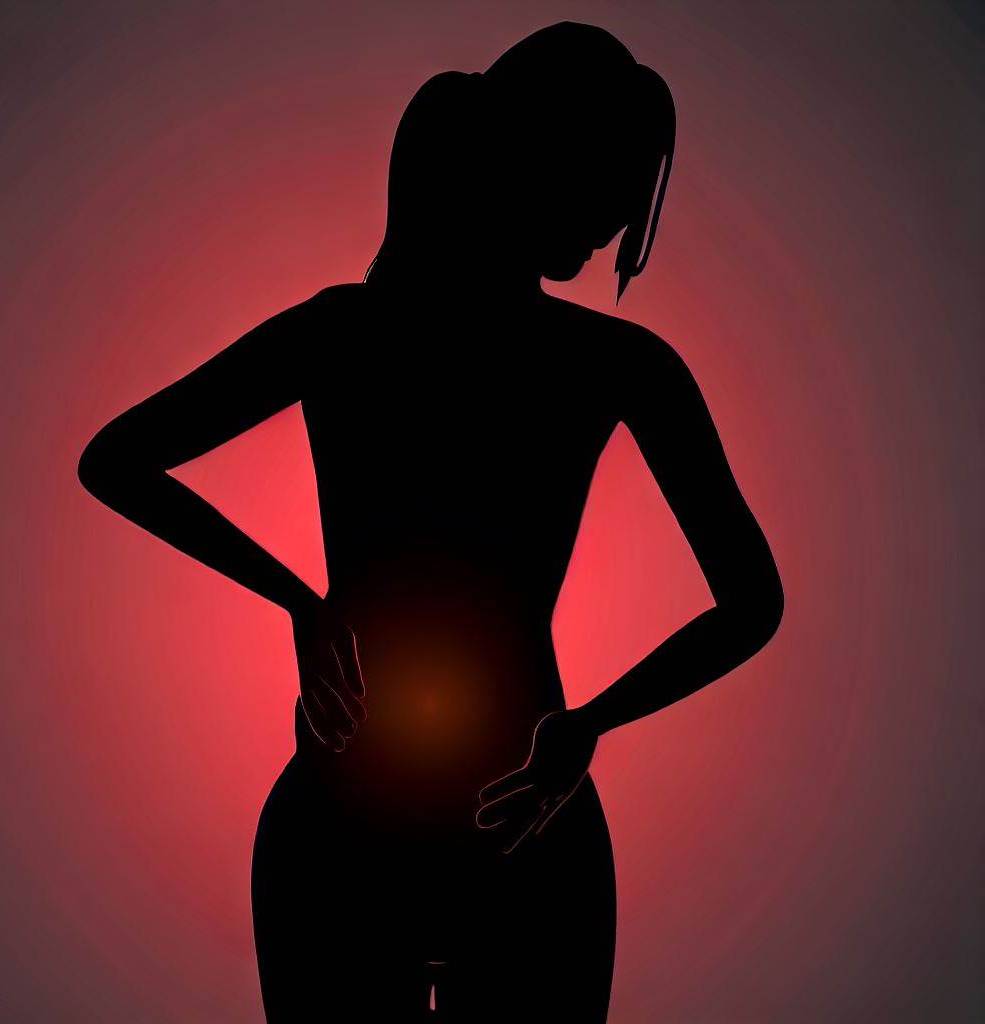3. Degenerative Disc Disease
Degenerative disc disease (DDD) is not actually a disease, but rather a condition that describes the natural wear and tear of the intervertebral discs in the spine as people age. The discs function as shock absorbers between the vertebrae, providing cushioning and flexibility. With age, these discs can lose hydration, become thinner, and develop small tears, leading to reduced shock absorption and potential pain or discomfort and cause female pain in lower back
Common symptoms of degenerative disc disease:
- Chronic or intermittent lower back or neck pain, which can range from mild to severe
- Pain that worsens with certain activities, such as lifting, bending, or twisting
- Pain that improves with changing positions, walking, or lying down
- Muscle stiffness or spasms
- Numbness, tingling, or weakness in the extremities if nerve compression is present
Home remedies:
- Heat and cold therapy: Apply ice or cold packs to the affected area to reduce inflammation, followed by heat to help relax the muscles and improve blood flow.
- Over-the-counter pain relievers: Nonsteroidal anti-inflammatory drugs (NSAIDs), such as ibuprofen or naproxen, can help alleviate pain and inflammation.
- Maintain a healthy body weight: Excess weight can put additional stress on the spine, potentially worsening symptoms of DDD.
Exercises:
- Low-impact aerobic activities: Walking, swimming, or cycling can help maintain overall fitness and promote circulation, which aids in the healing process.
- Core strengthening exercises: Strengthening the muscles in your abdomen and lower back can provide better support for your spine, reducing the load on the discs.
- Flexibility exercises: Gentle stretching and range-of-motion exercises can help maintain spinal flexibility and reduce stiffness.
- Yoga or Pilates: These practices can improve core strength, and flexibility, and promote proper spinal alignment.
Vitamins and nutrition:
- Vitamin D: Supports bone health and helps with calcium absorption.
- Vitamin C: Aids in collagen production, which is essential for maintaining healthy connective tissues, including intervertebral discs.
- Omega-3 fatty acids: Found in fish, flaxseed, and walnuts, these can help reduce inflammation.
- Magnesium: Supports muscle and nerve function and can be found in leafy greens, nuts, and whole grains.
- Maintain a balanced diet with plenty of fruits, vegetables, lean protein, and whole grains to support overall health and healing.
Medication:
- Prescription pain relievers: In some cases, your doctor may prescribe stronger pain medications for short-term use.
- Muscle relaxants: These can help alleviate muscle spasms associated with DDD.
- Corticosteroid injections: Injections into the affected area can provide temporary relief by reducing inflammation.
When to seek care:
Consult a healthcare professional if you experience any of the following:
- Severe or persistent pain that does not improve with rest and over-the-counter pain relievers
- Numbness, tingling, or weakness in your extremities
- Loss of bowel or bladder control
- Difficulty walking or standing due to pain or weakness
4. Osteoarthritis
Osteoarthritis (OA) is a degenerative joint disease characterized by the breakdown of cartilage, which cushions the ends of bones within the joints. This degeneration leads to pain, stiffness, and reduced mobility. Osteoarthritis is the most common form of arthritis and typically affects older adults, although it can also develop as a result of injury or other factors and can indirectly cause female pain in lower back
Common symptoms of osteoarthritis:
- Joint pain that worsens with activity and improves with rest
- Stiffness, especially upon waking or after periods of inactivity
- Swelling around the affected joint(s)
- Reduced range of motion
- Joint instability or a feeling of the joint “giving way”
- Grinding or clicking sensation during joint movement
- Bone spurs, which may be felt as hard lumps near the affected joint
Home remedies:
- Heat and cold therapy: Apply ice or cold packs to the affected joint to reduce inflammation, followed by heat to help relax the muscles and improve blood flow.
- Over-the-counter pain relievers: Nonsteroidal anti-inflammatory drugs (NSAIDs), such as ibuprofen or naproxen, can help alleviate pain and inflammation.
- Maintain a healthy body weight: Excess weight puts additional stress on weight-bearing joints, potentially worsening symptoms of OA.
Exercises:
- Low-impact aerobic activities: Walking, swimming, or cycling can help maintain overall fitness and promote circulation, which aids in the healing process.
- Strengthening exercises: Strengthening the muscles around the affected joint can provide better support and reduce stress on the joint.
- Range-of-motion exercises: Gentle stretching and range-of-motion exercises can help maintain joint flexibility and reduce stiffness.
- Tai chi or yoga: These practices can improve balance, flexibility, and muscle strength, promoting joint health can help with female pain in lower back
Vitamins and nutrition:
- Vitamin D: Supports bone health and helps with calcium absorption.
- Vitamin C: Aids in collagen production, essential for maintaining healthy cartilage and connective tissues.
- Omega-3 fatty acids: Found in fish, flaxseed, and walnuts, these can help reduce inflammation.
- Glucosamine and chondroitin: These supplements may help slow cartilage breakdown, although more research is needed to confirm their effectiveness.
- Maintain a balanced diet with plenty of fruits, vegetables, lean protein, and whole grains to support overall health and healing.
Medication:
- Prescription pain relievers: In some cases, your doctor may prescribe stronger pain medications for short-term use.
- Topical pain relievers: Creams or gels containing ingredients like capsaicin, menthol, or NSAIDs can provide temporary pain relief when applied to the affected joint.
- Corticosteroid injections: Injections into the affected joint can provide temporary relief by reducing inflammation.
When to seek care:
Consult a healthcare professional if you experience any of the following:
- Severe or persistent pain that does not improve with rest and over-the-counter pain relievers
- Significant joint swelling or redness
- Reduced joint mobility that interferes with daily activities
- Persistent joint stiffness or instability

